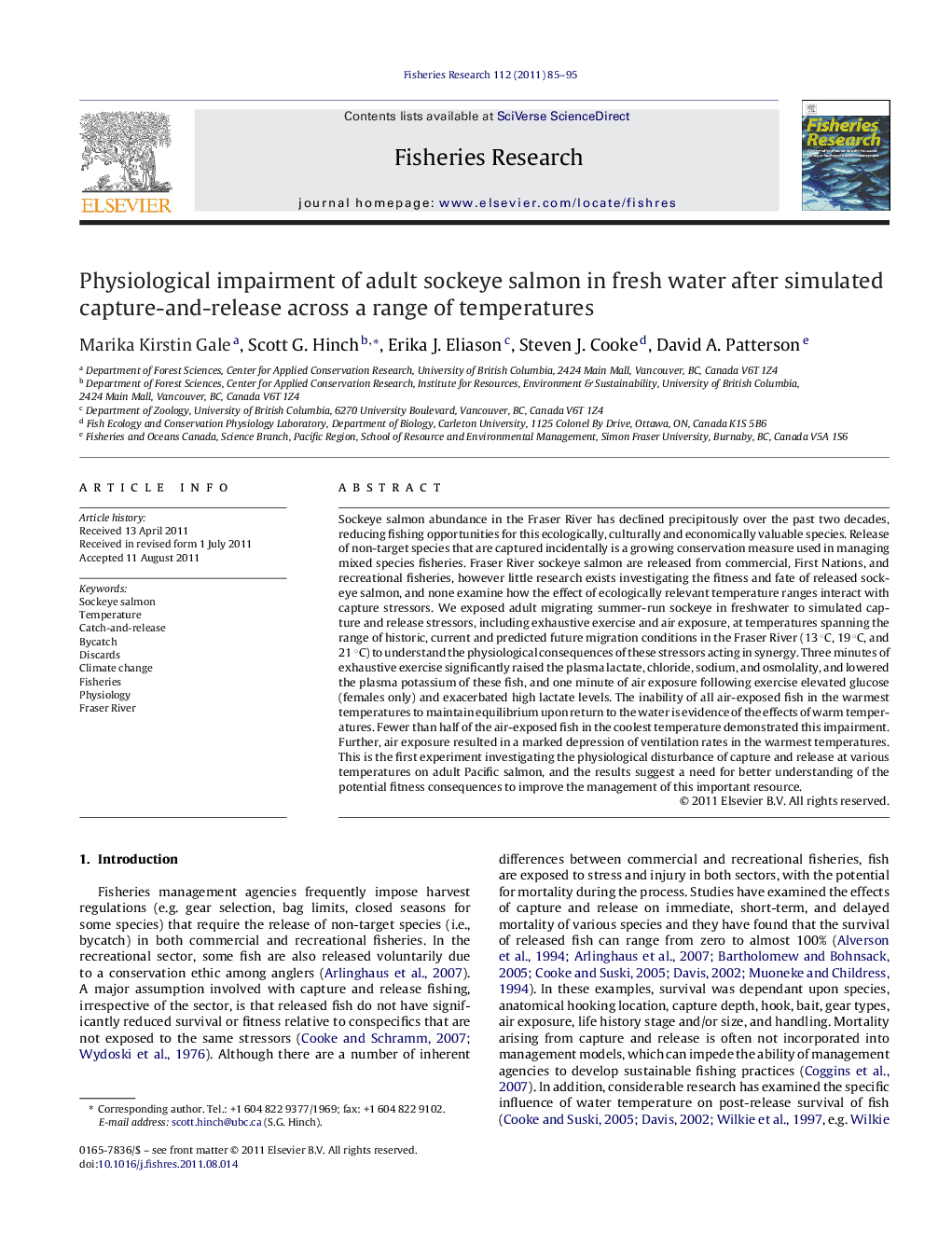| Article ID | Journal | Published Year | Pages | File Type |
|---|---|---|---|---|
| 4543559 | Fisheries Research | 2011 | 11 Pages |
Sockeye salmon abundance in the Fraser River has declined precipitously over the past two decades, reducing fishing opportunities for this ecologically, culturally and economically valuable species. Release of non-target species that are captured incidentally is a growing conservation measure used in managing mixed species fisheries. Fraser River sockeye salmon are released from commercial, First Nations, and recreational fisheries, however little research exists investigating the fitness and fate of released sockeye salmon, and none examine how the effect of ecologically relevant temperature ranges interact with capture stressors. We exposed adult migrating summer-run sockeye in freshwater to simulated capture and release stressors, including exhaustive exercise and air exposure, at temperatures spanning the range of historic, current and predicted future migration conditions in the Fraser River (13 °C, 19 °C, and 21 °C) to understand the physiological consequences of these stressors acting in synergy. Three minutes of exhaustive exercise significantly raised the plasma lactate, chloride, sodium, and osmolality, and lowered the plasma potassium of these fish, and one minute of air exposure following exercise elevated glucose (females only) and exacerbated high lactate levels. The inability of all air-exposed fish in the warmest temperatures to maintain equilibrium upon return to the water is evidence of the effects of warm temperatures. Fewer than half of the air-exposed fish in the coolest temperature demonstrated this impairment. Further, air exposure resulted in a marked depression of ventilation rates in the warmest temperatures. This is the first experiment investigating the physiological disturbance of capture and release at various temperatures on adult Pacific salmon, and the results suggest a need for better understanding of the potential fitness consequences to improve the management of this important resource.
► We exposed Fraser River sockeye salmon to simulated capture at three temperatures. ► We examine physiological responses to simulated catch and release. ► Capture elevated plasma lactate, chloride, sodium, and lowered potassium. ► Air exposure at warm temperatures caused equilibrium loss at release. ► Avoiding air exposure may reduce mortality due to secondary capture or predation.
